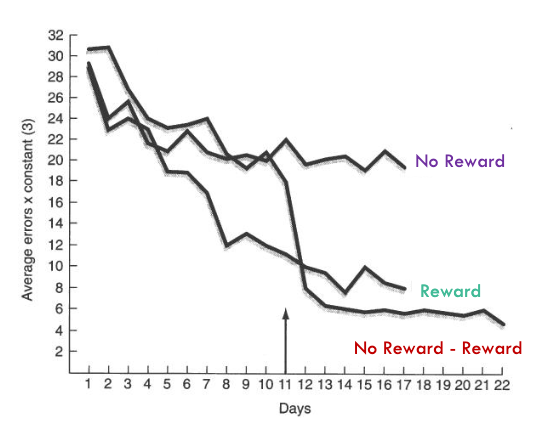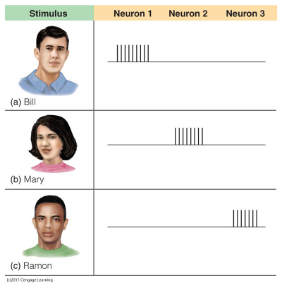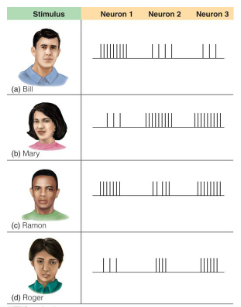PSYC340 Exam 1 ALL
1/202
Earn XP
Name | Mastery | Learn | Test | Matching | Spaced |
|---|
No study sessions yet.
203 Terms
The Scope of Cognitive Psychology
Perception, Attention, Object recognition, Memory, Knowledge, Language, Judgment and reasoning, Problem-solving, intelligence
Rationalism (Rene Descartes 1596-1650)
Opinions and actions should be based on reason rather than emotions, faith or sensation.
Cartesian Dualism (Rene Descartes 1596-1650)
The belief that the mind and brain are separate
British Empiricism (mid 1600s-mid 1700s)
Knowledge is gained through experimentation and revision
Structuralism
Wilhelm Wundt & Edward Titchener’s (1800s- early 1900s)
Overall experience is defined by combining sensations
Introspection
Wundt and Titchener (1800s to early 1900s)
Textbook: A method in which people observe and record the content of their own mental lives and the sequence of their own observed experiences.
Slides: Research technique in which trained participants describe their experiences and thoughts in response to stimuli.
What are some advantages with Introspection?
Controlled conditions (done within a lab)
Attempt at rigor (training the participants)
What are some problems with introspection?
Interpersonal variation between responses (variability between participants)
Intrapersonal variation of responses (variability in the same participants)
Results could not be verified (there is no way to test what these people are claiming)
Can’t tell us anything about unconscious events
What is the first known cognitive psychology experiment that is similar to cognitive psychology as it is today?
Mental Chronometry: How long does the mental process take?
Explored reaction time (RT) experiments: Measure interval between a stimulus and a persons response to that stimulus.
We can infer mental processes from someone’s behavior
Franciscus Donders (1868)
Who are some notable behaviorist?
John B. Watson and BF Skinner
Behaviorism (Early to Mid 1900s)
Mental processes are not directly observable, but behaviors are → Psychologist should only study directly observable behaviors
Limitations of Behaviorism
People act based on internal processes, not just based on stimuli
Different stimuli elicit the same behavior (Behaviorist say that different stimuli should always have different behavior)
Breland and Breland’s “The Misbehavior of Organisms”
Positive reinforcement in animal behavior
Trained them to do behaviors they did naturally (ex. chicken jumping on platforms)
Also trained them to do non-natural behaviors (raccoon putting a basketball in a hoop) Even though they trained it with rewards, the raccoons still could not overcome its natural instincts to try and wash the ball
Found that they could teach the animals to do many things, but they could still misbehave.
Disproves Behaviorism and shows that stimuli is not the only thing that drives behavior.
Kant’s transcendental method
Begin with observable fact and then work backwards to infer causes (what are the invisible effects of a visible cause)
Tolman’s cognitive maps
Rats exploring maze - 3 groups
No reward group - Received no reward for finding the end of the maze
Reward - Received food reward for finding the end of the maze
No Reward → reward - Received no reward for the 1st 10 days, then were rewarded
No reward → reward rats developed a cognitive map through latent learning

Latent Learning
A type of learning that occurs subconsciously and is not immediately obvious.
To understand cognitive behavior, we must:
Measure observable behavior
Make inferences about underlying cognitive abilities
Consider what this says about how the mind works
(This is how most cog psych studies go)
Operant conditioning
A learning process that uses rewards and punishments to modify behavior (Positive punishment, negative punishment, positive reinforcement, negative reinforcement)
Classical conditioning
A learning process that involves associating a neutral stimulus with a stimulus that produces a natural response
Complexity
The brain and nervous system are very complex
Integration
The brain integrates information from all senses. Nerves connect with at least 10,000 other nerve cells
Adaptability
The brain has to adapt to changing environment (ex. the brain uses different parts when walking to class vs being in class)
Neuroplasticity
Brain’s capacity for physical changes in response to experience
The brain’s ability to change, especially during childhood, by reorganizing after damage or by building new pathways based on experience
Developing new connections with new experience
Who first demonstrated Neuroplasticity, and what did she use to do so?
Dr. Mariam Diamond and colleagues at UC Berkeley
Caged rats in a stimulating (fun) vs unstimulating (nothing to do) environments
Brain matter of the rats in the stimulating environments was thicker (it developed more)
What are the two types of brain cells?
Glial Cells
Neurons
Glial cells
Cells that support, nourish and protect neurons
Physically and chemical buffering neurons
Removes dead neurons
Gives oxygen to neurons
Neurons
Cells specialized to receive and transmit information in the nervous system (Nerve cells)
What are the basic parts of a neuron?
Dendrites
Cell body (soma)
Axon
Myelin Sheath
Node of ranvier
Axon terminals
Dendrites (parts of a neuron)
Branch like protrusions at the top of the neuron which detect incoming signals.
Cell body/soma (parts of a neuron)
Contains the nucleus and cellular machinery
Axon (parts of a neuron)
Transmits signals to other neurons
Myelin Sheath (parts of a neuron)
Covers the axons, insulates them and facilitates neural communication
Nodes of ranvier (parts of a neuron)
Refer to the gaps in the myelin sheath
Axon terminals (parts of a neuron)
Connect to other neurons
What are the three types of neurons?
Sensory (afferent) neurons
Motor (efferent) Neurons
Interneurons
Sensory (afferent) Neurons (types of neurons)
Transmit information from environment to central nervous system (CNS)
Any physical sensation
Takes information from the environment and body and sends it to our brain
Motor (efferent) Neurons (types of neurons)
Transmits information from the central nervous system (CNS) to muscles/organs/glands
Interneurons (types of neurons)
Connect the brain regions
ex. can enable connection between afferent and efferent neurons
Enables us to do higher order cognitive functions
Action potential (communication within neurons)
Electrical signals that enable communications within neurons
If the stimulus reaches threshold, an action potential is fired and propagates (moves) down the axon
The process of action potential
In response to a signal, the soma end of the axon becomes depolarized
The depolarization spreads down the axon. Meanwhile, the first part of the membrane repolarizes. Because the Na channels are inactivated and additional K channels have opened, the membrane cannot depolarize again.
The action potential continues to travel down the axon.
Depolarizing (Process of action potential)
Small gates in the cell wall open, allows fluid containing positive charged ions flows in and stops change differential.
Repolarizing (process of action potential)
Changing back from positive ions to negative ions.
All-or-none law
The strength in which a neurons fires is independent to the strength of the stimulus. If the stimulus exceeds the threshold level, then the neuron fires (all). If it doesn’t reach the threshold, it doesn’t (none).
Either the stimulus fires or it doesn’t
If the signal is sent, it is always the same magnitude (neurons only have one strength they can send)
How to measure action potential
The size is not measured; size remains consistent
The rate of firing is what’s measured (how intense the stimulus is)
Low intensities: slow firing
High intensities: fast firing
Neurotransmitters (communication between neurons)
Chemical released by one neuron to communicate with another neuron
Synapse (communication between neurons)
The region where axons of one neuron and dendrites of another come together.
Presynaptic neurons (communication between neurons)
Neuron that releases the neurotransmitters
Postsynaptic neuron (communication between neurons)
Neuron that receives the neurotransmitters
Reuptake (communication between neurons)
Reabsorption of a neurotransmitter by the presynaptic neuron
Excitatory effects (neurotransmitters)
Encourages the next neuron to fire (ex. serotonin)
Inhibitory effects (neurotransmitters)
Keeps the next neuron from firing (ex. GABA)
GABA (Inhibitory effects)
The brains break petal
Keeps neurons from firing to neurons we don’t want it to go to
Neural representations
How our brain represents different objects, experiences, memories, cognitive functions
Feature detectors (Neural representations)
Neurons that fire only to specific qualities of stimuli
Orientation, movement, length
Found in early stages of visual processing
Sensitive to lines and combinations of lines
Sensory coding (Neural representations)
How neurons represent characteristics of the environment
Specificity coding (sensory coding)
Representation via single dedicated neurons
ex. a neuron for your pet, neuron for your mom

Sparse coding (sensory coding)
Representation via a pattern of firing across a small number of neurons
ex. the area around you when walking to class
Distributed coding (sensory coding)
Many neurons working together to encode information

Brainstem
Central core of the brain, beginning where the spinal cord swells as it enters the skull; responsible for the automatic survival functions
Medulla (brainstem)
Hindbrain structure that is the brainstem’s base; controls heartbeat and breathing
Pons (brainstem)
Helps coordinate movement and control sleep/awakeness
Cerebellum
Enables non-verbal learning and memory, helps us judge time, modulate emotions, discriminate sounds and textures, coordinates voluntary movements
Exist on both sides of the brain
Allows the brain to ignore normal sensations and focus on abnormal ones (ex. pain is abnormal)
Cerebellum tickling experiment
Participants in and MRI machine either tickled themselves or were tickled by researchers
When participants tickled themselves, the cerebellum communicated with the sensory cortex (told the sensory cortex that it was just yourself and cancelled out sensory experiences)
Part of the cerebellums function is to tell us what to expect from our own body movements
Implicit memories
Information that we do not store on purpose and is unintentionally memorized (ex: passwords)
Stereotyped behavior
A repetitive behavior that has no purpose (ex. typing)
Thalamus (brainstem)
The brain’s sensory control center
Located at the top of the brainstem
Reticular formation (brainstem)
The nerve network running through the brainstem and thalamus
Acts as a filter that relays important information to other brain areas
Plays an important role in controlling arousal
Superior colliculus (Midbrain)
Receives projections from retina (sight)
Inferior colliculus (Midbrain)
Receives projections from ear (hearing)
Substantia Nigra (midbrain)
Connection to forebrain for reward and initiating movement
Basal Ganglia (Forebrain)
Movement and S-R learning
Damage can result in uncontrolled movement (parkisons)
Limbic system (Forebrain)
Neural system (many different structures) that lies between the oldest and newest brain areas
Associated with emotions and drives (memory and emotions)
Includes the amygdala, hypothalamus and the hippocampus
Amygdala (limbic system)
Two almond shaped neural clusters that enable aggression and fear; linked to emotion
Hypothalamus (limbic system)
Linked to emotion and reward
Positioned below the thalamus
Directs several maintenance activities
Helps govern the endocrine system via the pituitary gland
Hippocampus
Helps process conscious, explicit memories of facts and events
ex. what you ate for breakfast
Helps determine what information should be stored but does not actually store it
Cerebral cortex (forebrain)
Neocortex: Outermost layer (neo - most recent, cortex - bark) Wrinkles in “bark” allow us to fit more neurons
4 lobes: Occipital, Temporal, Frontal, Parietal
Occipital lobe (cerebral cortex) (Cortical structures)
Interpret and combine visual information (color, shape, size)
Temporal lobe (cerebral cortex) (cortical structures)
Hearing, language, auditory and perceptual processing, memory
Frontal lobe (cerebral cortex) (Cortical structures)
Intelligence, personality, voluntary muscles, memory, thought, reasoning and planning
Parietal (cerebral cortex) (Cortical structures)
Spatial location, attention, motor control, temperature, pain and pressure
Cortical structures (Cerebral cortex)
3 divisions
Primary motor projection areas
Primary sensory projection areas
Association areas
Somatosensory cortex (primary sensory projection areas)
Cerebral cortex area at the front of the parietal lobes
Registers and processes body touch and movement sensations
Motor cortex (primary motor projection areas)
Cerebral cortex area at the rear of the frontal lobes that controls voluntary movement.
3 common features of sensory and motor projection areas
“Map” of environment
Function matters more than size
Contralateral control
Contralateral control (primary motor/sensory projection areas)
Processing is crossed between sides of the brain (Right hemisphere controls left side of body, left hemisphere controls right side of body)
Association areas (Cortical structures)
Areas of cerebral cortex not part of motor or sensory cortex
Involved in higher mental functions
Found in all 4 lobes
Prefrontal cortex in frontal lobe (Association areas)
Enables forward-thinking and judgment, planning and processing of new memories and personality.
Damage in this area could result in the inability to plan ahead, damage to personality, impaired intelligence test scores and other losses
Depends on which lobe the damage occurs
Bumps and fissures that cover cortex (Cortical structures)
Gyri (bumps) sulci (fissures)
Longitudinal fissure
Central fissure
Sylvian fissure
The bumps and folds allow more neurons in the brain
Longitudinal fissure (bumps and fissures)
Separates hemispheres
Central fissure (bumps and fissures)
Divides frontal and parietal lobes
Sylvian fissure (bumps and fissures)
Divides frontal and temporal lobes
Hemispheric lateralization
Our brain is divided into two hemispheres
These two hemispheres specialize in different areas, this specialization is known as lateralization
Right hemisphere (lateralization)
Spatial perception, visual recognition, emotion, humor
Left hemisphere (lateralization)
Verbal processing, speech, grammar
Language is a left hemisphere concept, but we still need the right hemisphere to interpret the message
Corpus Callosum (Lateralization)
Large band of neural fibers connecting both brain hemispheres and carrying messages between them
Prosopagnosia (functional localization)
Inability to recognize faces, damage in fusiform face area
The perceptual recognition system is disrupted
The emotional system that underlies the feeling of familiarity is intact
(by looking at responses on the skin, we can measure the physiological arousal to know that some unconscious part of the patient’s brain knows the person unconsciously)
Neural networks
Cognition is the result of many different areas of the brain communicating with each other
Structural connectivity (Neural networks)
The axon pathways that connect different parts of the brain; like wiring of the brain
Literally physically connected together
Functional connectivity (Neural Networks)
The different parts of the brain that tend to be active during the same task; brain areas with correlated neural activity
Active at the same time when doing a task
Functional Magnetic Resonance (fMRI) (Studying the Brain) and its advantages and disadvantages
Reveals functions of brain regions by showing oxygenated blood flow to different areas of the brain during a task
Correlational NOT causational
Advantage: Can see exactly where the brain responds to a stimulus
Disadvantage: It’s hard to measure when the response occurs